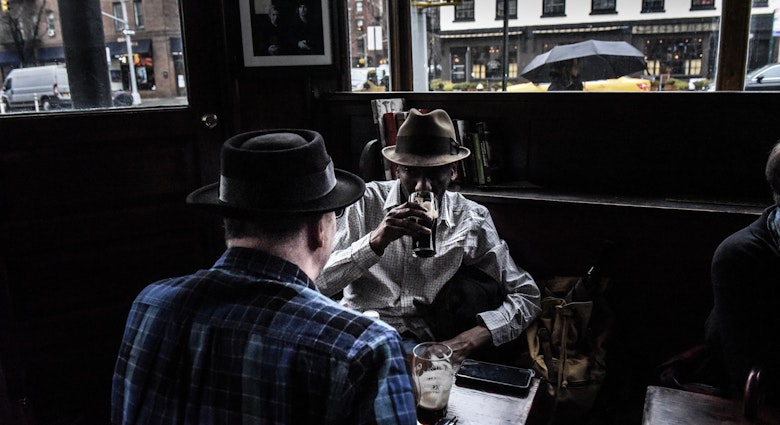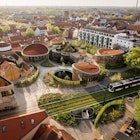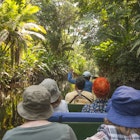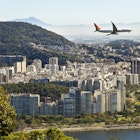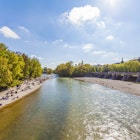Granada’s Alhambra, a 1000-year-old palace complex that rises like an Arabian Nights fantasy at the foot of the Sierra Nevada mountain range, is a hard act to follow. After basking in the glory of its foppish Nasrid rulers amid ornate palaces and even more ornate gardens, everything else threatens to be anti-climactic.
However, Granada is made up of far more than just a Moorish citadel dipped in a modern Christian coating. Legendary cultures collide in this Andalucían city, throwing out a nebulous mix of bohemians, poets, business people, artists and musicians. Here are some ideas on where to go once the main act is over.
Realejo quarter
Staggering out of the Alhambra complex, mouths agape and imaginations fired, inspired visitors usually find themselves in the Realejo quarter, a precipitous whitewashed neighbourhood that inhabits the southeast-facing slopes of the Alhambra hill. It is worth lingering here. Once the city’s main Jewish quarter, the Realejo is notable for its cármenes (large mansions with walled gardens). The Carmen de los Martires, with its magnificently dishevelled gardens and restored 19th-century mansion, resides on the site of the oddly named Convent of the Discalced Carmelites. The Casa Museo Manuel de Falla once belonged to Spain’s greatest 20th century classical composer. Inside its walls you will find Manuel de Falla’s original piano and a scented garden overflowing with jasmine and roses.
Federico García Lorca
Granada’s complexities become clearer when you tap into the life and work of Spain’s greatest poet and playwright, Federico García Lorca. Lorca was born in Granada in 1898 and went on to capture the city’s passion and ambiguity in a precocious collection of poems and plays. The charmingly understated house where he was born in Fuente Vaqueros, 17km west of Granada, is now a museum awash with interesting photos, posters and paraphernalia from his plays. You can also take a pre-bookable guided tour around his former summer house, the Huerta de San Vicente, located a 25-minute walk south of the city centre.
Moorish baths
Granada’s best bathhouse, Hammams de Al-Andalus, offers something a shade less boisterous than a Moroccan bathhouse and something more authentic than your typical candles-and-incense spa back home. Bathers recline in Alhambra-like opulence in intricately pillared underground pools, imbibing mint tea and evoking images of Omar Sharif in the film Lawrence of Arabia.
Palace-like hotels
After you have seen the Alhambra, staying in a hotel that vaguely resembles it might seem like a distant pipedream. But the dream can be partially realized in one of Granada’s meticulously restored boutique hotels. The 15th-century Casa Morisca Hotel with its 14 Alhambra-esque rooms arranged around an ornamental patio and fountain, could compete with the finest of Marrakech’s riads. More Moorish magic can be glimpsed in the Hotel Casa del Capitel Nazarí, a 1503 Renaissance palace that is as much architectural history lesson as plush accommodation.
Authentic flamenco
While Jerez and Seville argue over flamenco’s soulful roots, Granada has concocted a musical offshoot of its own. The Granadina is an ornamental guitar-driven lament that apes the intricate stucco and trickling fountains of the Alhambra. It is best heard deep in the street labyrinth of the Albayzín at the Peña de la Platería, a bona fide aficionado’s flamenco club with a spacious alfresco patio that has been hosting dramatic performances since 1949.
Teterías
Half a millennium has passed since Boabdil the Moor heaved his last sigh, but the refined customs of Spain’s final emir live on in Granada’s Arabic teterías -- atmospheric tearooms embellished with puffed cushions, shadowy lanterns and ample stucco. The best teterías are in the Moorish Albayzin quarter, in particular on Calle Calderería Nueva, and are popular with late-night bohemians who huddle around hand-painted tables sharing puffs on the ubiquitous shishas (water-pipes).
Free tapas
Cynics claim there is no such thing as a free lunch, but the tapas bars of Granada beg to differ. Thanks, in part, to an above-average quota of students, the city is one of the last bastions of a noble practice that was once widespread in Spain. Start your Granada tapas bar crawl on Calle de Elvira or Calle Navas and gravitate to the organized mayhem of Bodegas Castañeda, an old-school favourite. A free tapas-plate is dispensed with every round of drinks you order.


